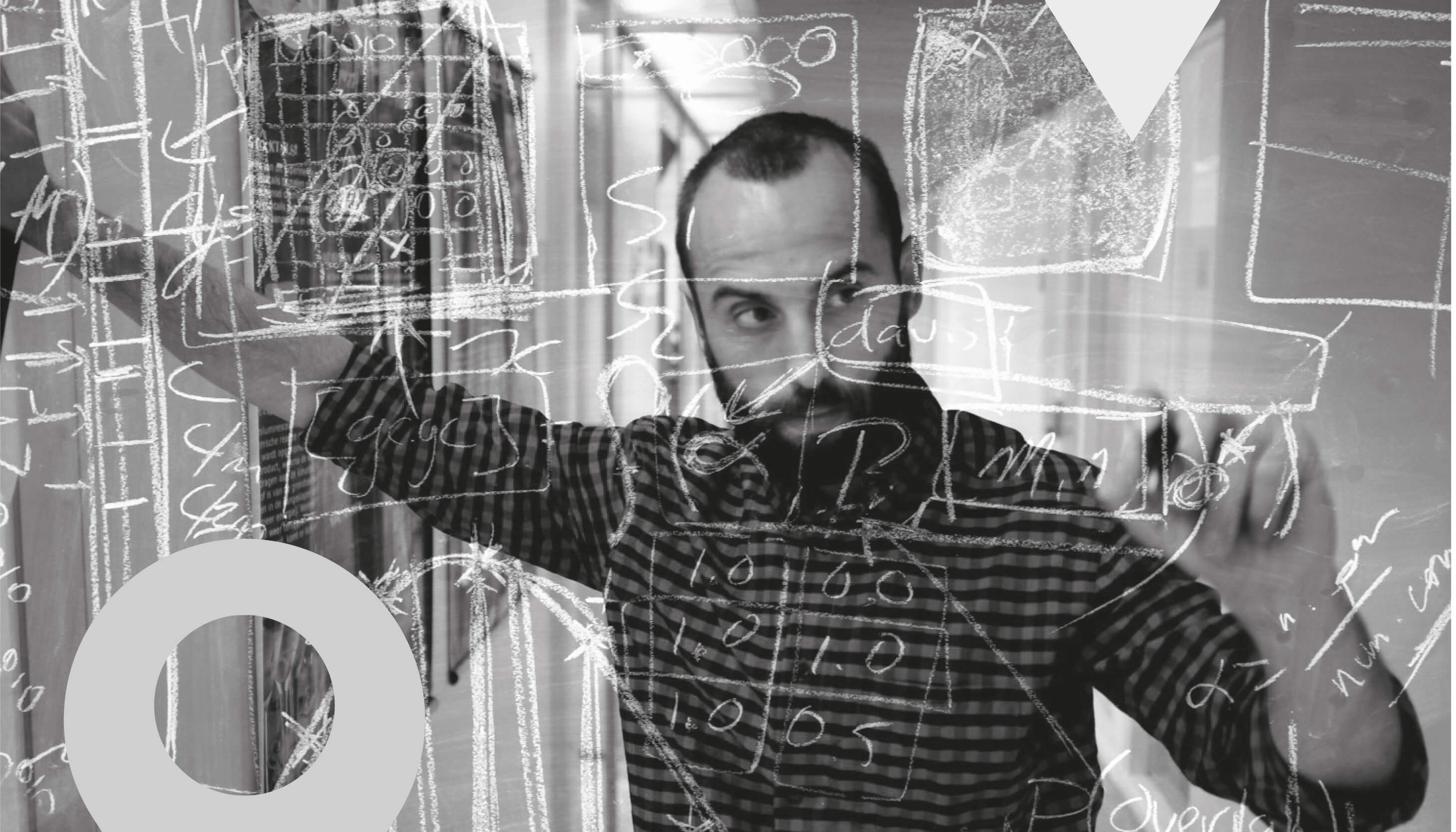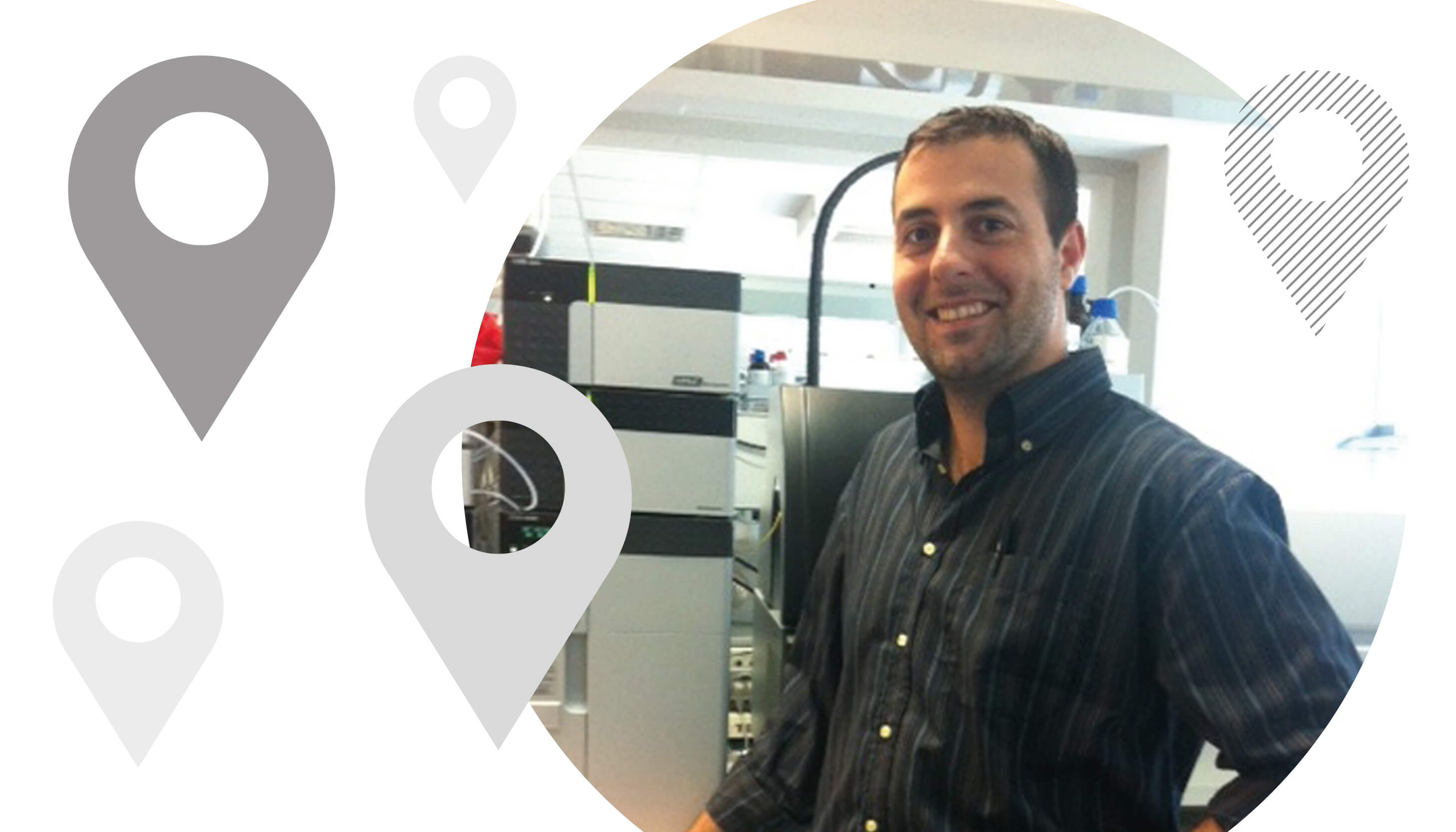By Michael Witting, Research Scientist, Research Unit Analytical BioGeoChemistry, Helmholtz Zentrum München, Neuherberg, Germany.
Landmark paper: JL Spalding et al., “Trace phosphate improves ZIC-pHILIC peak shape, sensitivity, and coverage for untargeted metabolomics”, J Proteome Res, 17, 3537–3546 (2018).
When I first used HILIC separation during my studies, I remember the satisfaction of achieving near-gaussian peaks of polar substances that could not usually be analyzed by reversed-phase techniques. However, to achieve those nice curves we used phosphate buffers in the millimolar range with UV detection.
When I later moved into the metabolomics field, which employs mass spectrometric detection, I had to say goodbye to phosphate-based buffers – and to nice peak shapes in HILIC. The polar part of the metabolome is still a major analytical challenge. Using specific columns and solvent systems, it’s possible to optimize chromatographic conditions for one or two classes of metabolites, but the comprehensive analysis of “all” metabolites is still a distant dream. Indeed, it is hard to see how we will ever achieve complete metabolome coverage in a single method – and analyzing several hundreds or thousands of samples using different methods, each optimized for a few metabolites, is not feasible in terms of time or sample amount.

In their paper, Spalding and colleagues showed that traces of phosphate improve metabolite separation on a zwitterionic column. In a series of experiments, they demonstrate that the addition of ammonium phosphate to either the mobile phase or injected sample improves the chromatographic peak shape. They conclude that the high charge density of the phosphate anion helps to shield strong electrostatic interactions, which otherwise would lead to asymmetric and distorted peaks. Using the optimized method – with phosphate added to the sample solvent – the authors were able to detect metabolite features with a higher sensitivity and increase their coverage of the polar metabolome.
This paper proves once again that analytical chemistry is not just a tool for doing metabolomics, but central to the whole approach. Certainly, more time must be spent on developing better and faster methods, if we are to achieve full metabolome coverage.
By M. Farooq Wahab, Research Engineering Scientist-V, Department of Chemistry & Biochemistry, University of Texas at Arlington, USA.
Landmark paper: K Banerjee-Ghosh et al., “Separation of enantiomers by their enantiospecific interaction with achiral magnetic substrates.” Science, 360.6395, 1331–1334 (2018).
In the 19th century, Max Planck’s supervisor advised him not to pursue physics because “almost everything is already discovered, and all that remains is to fill a few holes” – a few short years later, quantum physics opened up a new world. Like the physicists of old, some analytical chemists feel that we have achieved everything we can in separation science, but the paper I have chosen as my landmark breaks the mold by showing separation of enantiomers using achiral magnetic substrates and magnets. Coincidently, the project is a collaboration of the Max Planck’s Institute, IBM and two institutes from Israel.
Classically, we separate enantiomers by introducing them in a chiral environment, where spatial effects retard one of the enantiomers in a fluid carrier; as a result, one of the enantiomer elutes later than the other. The authors of this paper added a new dimension to liquid chromatography by showing that enantiomers also interact differently with magnetized materials. If the magnetic dipole is pointing up, one enantiomer adsorbs on the surface, and if the direction is reversed, the other enantiomer adsorbs faster. In the case of racemic [Cya-(Ala-Aib)5-CO2H], where Cya is cystamine, Ala is alanine, and Aib is aminoisobutyric acid, the adsorbent surface (gold layered upon magnetic materials) preferred the L enantiomer when the magnetic field was up, while D-enantiomer was favored when it was down. The study attributes this discrimination to a spin-specific interaction, but not by the magnetic field itself. The beauty of this work is that the method is generic and in future we may no longer require costly, specific chiral columns.

By Anna Laura Capriotti, Associate Professor, Department of Chemistry, University La Sapienza, Roma, Italy.
Landmark paper: EN McCool et al., “Deep top-down proteomics using capillary zone electrophoresis tandem mass spectrometry: identification of 5700 proteoforms from the Escherichia coli proteome”, Anal Chem, 90, 5529−5533 (2018).
In the last two decades, proteomics has begun to overtake genomics in the study of biological systems. Bottom-up proteomics now allows the identification of thousands of proteins; nevertheless, some believe the golden age of proteomics might be fading with the advent of new omics technologies, such as metabolomics, which shed new light on what is happening within living organisms in real time. Bottom-up proteomics provides indirect information, based on the analysis of peptides, which does not provide complete sequence coverage and hinders quantitative analysis. Developing new top-down strategies to accomplish direct comprehensive protein analysis presents a formidable but not insurmountable technological challenge – and it would hugely benefit the biomedical community. Top-down proteomics gives access to the identifications of proteoforms – with a variety of sequence variations, splice isoforms, and over 400 known posttranslational modifications.
My chosen landmark paper deals with the identification of proteoforms in a model system, Escherichia coli, using an orthogonal multidimensional separation platform that couples size-exclusion chromatography and reversed-phase liquid chromatography-based protein prefractionation with capillary zone electrophoresis tandem mass spectrometry. The authors obtained the largest bacterial top-down proteomics data set reported to date, identifying 5,700 proteoforms from the E. coli proteome, with a tenfold improvement compared with a previous study from 2017. It begs the question – how many proteoforms exist in nature? We currently do not know, although the advent of innovative strategies for proteoform identification may bring answers in the near future.

By James Grinias, Assistant Professor, Department of Chemistry & Biochemistry, Rowan University, Glassboro, New Jersey, USA.
Landmark paper: EK Parker et al., “3D printed microfluidic devices with immunoaffinity monoliths for extraction of preterm birth biomarkers”, Anal Bioanal Chem, In Press (2018). https://doi.org/10.1007/s00216-018-1440-9
One of the fastest growing areas in analytical chemistry is the use of 3D printing to facilitate lower-cost separation methods. Several research teams across the world have been working in this subfield, and one that I have closely watched is the collaboration between the Woolley and Nordin groups at Brigham Young University. These groups have recently printed microfluidic chips with feature sizes well under 100 µm, achievable only after building their own digital light processor-stereolithography (DLP-SLA) 3D printer and formulating unique printer resins. This new platform has since been used to generate printed channels, valves, pumps, and a myriad of other parts that would be necessary for a fully integrated microfluidic total analysis system.
In the report featured here, the groups applied this new fabrication technology to a medical issue that the Woolley group has previously studied with microchip electrophoresis – the clinical diagnosis of preterm birth (PTB). As a new father, it is not long ago that I worried about the health of my own baby during his development, which made me take special notice of this paper – tragically, PTB complications lead to over one million infant deaths annually. In an effort to improve the diagnosis of PTB and prevent severe complications, the team developed a new point-of-care testing device, which features an integrated monolithic extraction bed for the isolation of PTB biomarkers from human blood serum. The ability to generate a functionalized monolith for sample trapping directly in a 3D printed device opens a wide range of possibilities towards low-cost analytical devices that require a separation step. Although the authors admit that this is just the first step towards a fully integrated system, it is an important one that may eventually lead to clinical measurements that significantly reduce the infant mortality rate due to PTB.

By Matthew Baker, Reader in Chemistry, Department of Pure and Applied Chemistry, University of Strathclyde, UK.
Landmark paper: TJ Huffman et al., “Infrared spectroscopy below the diffraction limit using an optical probe”, Proc SPIE, 10657, Next Generation Spectroscopic Technologies XI, 106570O (2018).
Infrared spectroscopy is currently undergoing a prolific stage in terms of new technologies. This paper describes “a new technique to collect infrared hyperspectral images below the IR diffraction limit. Optically Sensed photo thermal InfraRed Imaging micro-Spectroscopy (OSIRIS) permits the construction of infrared images on a resolution limited by the wavelength of the probe beam.” The technique, named after the ancient Egyptian god of the underworld, is incredibly exciting for the future of imaging spectroscopy and in particular for uncovering new biology. The developments described in the paper suggest that contrast resolutions below 100 nm may be possible. And that opens up many new options for image analysis via infrared, including previously unattainable subcellular resolutions and structures, and even viral analysis.

By Caroline West, Associate Professor, Institut de Chimie Organique et Analytique, University of Orleans, ICOA, CNRS UMR 7311, France.
Landmark paper: V Desfontaine et al., “Applicability of supercritical fluid chromatography-mass spectrometry to metabolomics. I – Optimization of separation conditions for the simultaneous analysis of hydrophilic and lipophilic substances”, J Chromatogr A, 1562, 96–107 (2018).
Supercritical fluid chromatography (SFC) was long regarded as a UCO (unknown chromatographic object) by many chromatographers. It was thought to be complicated, unpractical, inappropriate to many application fields, and many other inaccurate qualifying adjectives. But times are changing. With the advent of modern instruments, many newcomers to the field bring with them a different view of the possibilities of SFC. Rather than limiting the technique to chiral prep-scale separations of pharmaceutical compounds with low or moderate polarity, they have adopted it for achiral analyses in a variety of applications that were previously mostly unknown to SFC. The prominence of the technique has risen greatly in natural products and environmental analysis, but the greatest change has been in the field of bioanalysis. Only ten years ago, SFC was hardly ever applied to biological samples like urine or plasma – now it is one of the dominant applications. The facilitated hyphenation of SFC to mass spectrometry is certainly a major contributor to this increased popularity, but the recent realization that SFC can work for polar species has also played a part. To allow these analyses, different mobile phase compositions must be adopted, comprising not only the most common pressurized carbon dioxide and alcohol co-solvents, but also small quantities of water and significant concentrations of salts to favor analyte solubility. In addition, the proportions of CO2 and co-solvent were previously always in favor of CO2, because of the invisible (nonexistent) barrier of 50:50 that few SFC chromatographers dared to cross. Now, it is better understood that larger proportions of co-solvent can be used. In the course of a gradient program, spanning the full composition range from 100 percent CO2 to 100 percent solvent is entirely feasible. This is unifying SFC and HPLC in a single analysis, and may be termed “unified chromatography”.
The paper I have selected is emblematic of these changing trends. It explores the feasibility of metabolomic analyses with unified chromatography hyphenated to mass spectrometry. In comparison to the most commonly used reversed-phase (RPLC) or hydrophilic interaction (HILIC) liquid chromatographic methods, the proposed method is able to analyze both lipophilic and hydrophilic metabolites within a single chromatographic analysis. With a careful selection of stationary phase and mobile phase to overcome the constraints of such a wide composition gradient, a 7-minute program allowed the elution and detection of 88 percent of metabolites (comprising a wide diversity of structures and polarities). Perfection is not possible in this world, and a portion of the detected metabolites still had unsatisfying peak shapes, but the potential of this method as a viable complement to existing LC methods is certain. Applicability to real samples remains to be demonstrated, but nonetheless I congratulate the authors on this fundamental work.

By Andrea Gargano, Tenure Track Assistant Professor, Centre for Analytical Science Amsterdam, van’t Hoff Institute for Molecular Science, Amsterdam, the Netherlands.
Landmark paper: T Wohlschlager et al., “Native mass spectrometry combined with enzymatic dissection unravels glycoform heterogeneity of biopharmaceuticals”, Nat Commun, 9, 1–9 (2018).
For my landmark paper of 2018, I have chosen a research article that I believe expresses the impressive development of analytical chemistry research in mass spectrometry (MS) of proteins.
The infusion of purified proteins in water-based (volatile) buffer solution using electrospray ionization mass spectrometry (native MS) was pioneered in 1990. Its maturation through the years has extended the mass range of MS of biomolecules (enabling measurements over 1 MDa), shining a light on the heterogeneity of large proteins (for example, distribution in phosphorylated and glycosylated forms) as well as their noncovalent interactions (protein complexes).
The work of Therese Wohlschlager captured my attention both for the complexity of the sample analyzed and the elegance of its sample preparation approach. In their manuscript, they performed native MS measurement of the therapeutic fusion protein etanercept. This biopharmaceutical is a large protein (with a theoretical mass of about 102 kDa) and highly heterogeneous, with multiple sites of glycosylation (adding up to 30 kDa).
The authors observed over 100 glycoforms of etanercept, combining native MS of the intact protein with measurements from different enzymatic dissection procedures of the samples to selectively cleave sugar residues (for example, sialic acid), sites of glycosylation (N or O glycans) or portions of the protein (TNFR and Fc domain). The integration of the results allowed the authors to assign a large proportion of the masses observed.
The article reveals the complexity of new biotherapeutics, underlying the analytical challenge of their characterization. However, native MS measurements are mostly limited to static nanoflow infusion experiments of (highly) purified proteins (with a few exceptions). To extend native MS to the study of large biomolecules in complex mixtures and matrices, there is a need for (native) separation science methodology hyphenated with native MS. I believe that this is an area where we will see significant developments in the next few years.

By Francesco Cacciola, Associate Professor of Food Chemistry, Department BIOMORF, University of Messina, Italy.
Landmark paper: S Toro-Uribe et al., “Characterization of secondary metabolites from green cocoa beans using focusing-modulated comprehensive two-dimensional liquid chromatography coupled to tandem mass spectrometry”, Anal Chim Acta, 1036, 204-213 (2018).
The analysis of complex food samples is challenging, but on-line comprehensive two-dimensional liquid chromatography is proving a very useful tool. Although the applications of LC×LC expand every year, there are still problems that need to be resolved, especially when it comes to coupling different separation mechanisms. To allow a more robust coupling between non-correlated separation mechanisms, the extent of the solvent strength mismatch between them should be minimized. An effective approach is to dilute the fraction eluting from the first dimension with a second dimension-compatible solvent, while a trapping column is employed simultaneously at the interface to avoid analyte losses.
Although theoretically simple, the optimization of this kind of approach is tricky (like almost everything related to method development in LC×LC!). The paper by Herrero and colleagues describes the development of an actively modulated on-line LC×LC method coupled to MS for the analysis of procyanidins and other secondary metabolites in green cocoa bean samples. Compared with other non-focusing modulation set-ups, their method allowed significant increases on resolving power and peak capacity. The proposed method demonstrates orthogonality reaching 66 percent of the available 2D space and a corrected peak capacity (accounting for the effects of first-dimension undersampling, band broadening and orthogonality) of 580.
This development demonstrates the importance of method optimization in food analysis, as a proper separation aids the subsequent identification of the components present in the sample. Using this approach, the authors identified xanthines, flavan-3-ols and oligomeric procyanidins. Plus, it should be noted that the use of state-of-the-art instruments both at the separation and at the detection level (high-resolution MS) could even further improve the obtained results. This methodology compares favorably to more conventional approaches previously employed to analyze procyanidins in complex samples. Perhaps more importantly, it reinforces our conviction that LC×LC has a promising future in food analysis.





